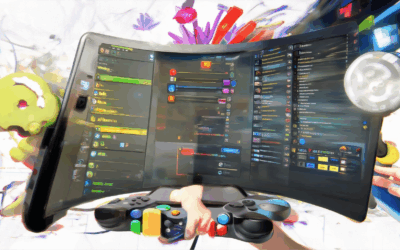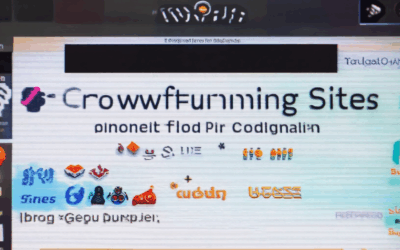Creating an indie game trailer is a crucial step in promoting your game, but it’s not always easy. With limited resources, time, and sometimes technical know-how, many indie developers struggle to create a trailer that truly captures their game’s essence and engages viewers. Whether you’re a seasoned developer or just starting out, this guide will walk you through the essential steps, tools, and strategies to create a compelling and effective indie game trailer. From understanding the key elements that make a great trailer to exploring cost-effective solutions and learning how to maximize your trailer’s impact, this article is designed to help you navigate the complexities of trailer creation while staying within your budget. By following the tips and insights provided, you’ll not only save time but also enhance your game’s visibility and connect with potential players who are eagerly waiting to discover your next big hit.
Final Answer:
Creating a game trailer involves several factors influencing its cost, ranging from the type of game to production style and intended use. Here’s a structured overview:
Cost Breakdown by Game Type
- Indie Game Trailers:
- Budget Range: $500 – $10,000
- Considerations: Utilize free tools like Blender and After Effects for cost-effectiveness.
- AAA Game Trailers:
- Budget Range: $50,000 – $200,000+
- Considerations: Involves high-quality 3D animation, motion capture, and complex effects.
- Mobile Game Trailers:
- Budget Range: $5,000 – $30,000
- Considerations: Optimized for mobile devices with shorter durations.
Additional Cost Influencers
- Length of Trailer: Longer videos incur higher costs due to extended production times.
- Production Style: High-end 3D vs. simpler 2D styles significantly impact cost.
- Voice Acting, Scriptwriting, Editing: Professional services add to expenses.
Buying vs. Building a Trailer
- Buying: Costs range from $500 to several thousand, including delivery and permits.
- Building: Requires materials ($800), tools ($300), and labor (DIY or $500-$1,000). Offers customization but demands time and effort.
Elements of a Good Trailer
- Visual Style: Aligns with game aesthetics, uses dynamic camera work.
- Story and Narrative: Captures emotional engagement and hints at deeper themes.
- Gameplay Footage: Showcases mechanics and unique selling points.
- Character Development: Introduces memorable characters with distinct personalities.
- Setting and World-Building: Enhances immersion with detailed environments.
- Emotional Appeal: Effective use of music and sound effects.
- Pacing: Starts strong, builds momentum, and matches platform needs.
Conclusion
Understanding these factors helps indie developers make informed decisions. Consideration of collaboration, asset reuse, and potential discounts for indie projects can further optimize costs. Balancing budget, skills, and resources is crucial for creating an effective and affordable game trailer.

How to Make Your Own Game Trailer
To create an engaging and professional game trailer, follow these organized steps:
- Brainstorm Your Game Concept
- Define your game’s core mechanics, story, and visual style.
- Consider whether your game fits into established genres like puzzle games, action RPGs, or sandbox games.
- Plan Your Trailer Script
- Outline the main plot points and key moments you want to showcase.
- Decide on the tone and style of your trailer, whether it’s cinematic, fast-paced, or humorous.
- Create a sample script using the following structure:
- Opening Scene (Hook & Branding)
- Gameplay Montage (Highlight Key Features)
- Cutscene (Story & Character Introduction)
- Ending Scene (Teaser for Future Content)
- Gather Assets
- Visuals : Use 2D or 3D art tools like Blender, Unity, or Adobe Premiere Pro to create visuals.
- Music & Sound Effects : Find royalty-free tracks on platforms like Free Music Archive or Epidemic Sound.
- Voiceover Talent : Hire or record your own narration to match your game’s tone.
- Design Your Trailer Structure
- Decide on the length (typically 1-2 minutes for gameplay trailers).
- Plan transitions between scenes to maintain viewer interest.
- Include a logo or branding at the beginning and end of the trailer.
- Start Production
- Break your project into three phases:
- Pre-Production : Finalize your script, select assets, and plan the pacing.
- Production : Record gameplay footage, capture cutscenes, and gather audio.
- Post-Production : Edit your raw footage, add effects, and mix audio.
- Add Finishing Touches
- Incorporate special effects like particle effects or animations.
- Refine the audio to ensure it’s clear and immersive.
- Test your trailer with friends or peers for feedback and make necessary adjustments.
- Distribute Your Trailer
- Upload your trailer to platforms like YouTube, Twitch, or your website.
- Share it on social media channels to reach a broader audience.
- Optimize your video for SEO by adding descriptive titles and tags.
By following these steps, you can create a polished and engaging game trailer that effectively showcases your game to potential players and partners.
Do Gaming Trailers Make Money?
Yes, gaming trailers can generate significant revenue when utilized effectively. They offer multiple avenues for monetization, making them a valuable asset for businesses and content creators. Below are some key ways gaming trailers contribute to income:
- Rental Income : Gaming trailers can be rented out for various events, corporate functions, and promotional activities. This provides consistent cash flow, especially during peak seasons or for long-term contracts.
- Custom Design Sales : Businesses can profit by offering customized gaming trailers tailored to specific needs. This service allows for premium pricing, catering to clients who require unique features or branding.
- Event Hosting : Some operators host gaming events, tournaments, or LAN parties within the trailers. These events can attract attendees, generating ticket sales and additional revenue streams.
- Advertising Opportunities : Companies can display advertisements on gaming trailers, leveraging the captive audience during events or rentals. This creates a supplementary income source.
- Streaming Promotions : Partnering with streamers or influencers to showcase gaming trailers during live broadcasts can drive visibility and interest, leading to inquiries and bookings.
By strategically managing these aspects, gaming trailer operators can maximize their profitability and establish a sustainable business model. For more details on how to get started, explore our gaming trailer rental and customization services today.

How Long Should an Indie Game Trailer Be?
The optimal length for an indie game trailer is typically between 90 seconds and 3 minutes . This duration provides enough time to showcase the game’s core mechanics, unique features, and visual appeal without overwhelming the viewer. Here’s a breakdown of why this timing works well:
- Engagement and Attention Span :
- A trailer that’s too short may leave viewers with little context about the game, while a longer one risks losing their interest due to boredom or frustration.
- Content Coverage :
- Within the 90-second to 3-minute window, you can effectively highlight gameplay mechanics, character designs, environments, and key moments that define the game’s identity.
- Pacing and Dynamics :
- Start with a hookshot to grab attention, transition into gameplay footage, and conclude with a compelling moment that leaves the audience eager for more.
- Platform Consideration :
- Keep intros and outros brief to accommodate mobile viewers who may have autoplay settings enabled.
By balancing visual storytelling with concise messaging, indie developers can craft trailers that resonate with audiences and effectively communicate the game’s value.

How Much Does It Cost to Make a Game Trailer?
The cost of producing a game trailer varies widely depending on several factors, including the type of game, length of the trailer, and production style. Below is a breakdown of typical cost ranges:
Indie Game Trailers
- Budget Range : $500 – $10,000
- Details : For indie games, costs are generally lower due to smaller teams and simpler animations. Many indie developers use free or low-cost tools like Blender for 3D modeling and After Effects for video editing.
AAA Game Trailers
- Budget Range : $50,000 – $200,000+
- Details : AAA game trailers often involve high-quality 3D animation, motion capture, and special effects. They typically last around 60 seconds and may include dynamic camera work and cinematic storytelling.
Mobile Game Trailers
- Budget Range : $5,000 – $30,000
- Details : Mobile game trailers are usually shorter (around 30 seconds) and may focus on gameplay mechanics rather than extensive cinematics. Costs are influenced by the need for optimized video formats for mobile devices.
Additional Factors Influencing Cost
- Length of Trailer : Longer trailers generally cost more due to extended production timelines.
- Production Style : High-end 3D animation with complex visual effects will increase costs significantly compared to simpler, 2D-style animations.
- Voice Acting, Scriptwriting, and Editing : These services can add to the overall cost, particularly if professional talent is hired.
Cost Breakdown Example
- Concept Design: $1,000 – $5,000
- Animation: $10,000 – $100,000+
- Audio (Music and Sound Effects): $1,000 – $15,000
- Editing and Post-Production: $5,000 – $20,000
- Additional Services (e.g., Voice Acting): $2,000 – $20,000
By understanding these factors, you can better estimate the cost of producing a game trailer that meets your project’s needs and budget constraints.
Is It Cheaper to Make Your Own Trailer?
Determining whether it’s cheaper to build your own trailer or buy one involves evaluating various factors, including initial costs, time, customization, and long-term considerations.
Buying a Trailer
- Cost: Ranges from $500 to several thousand dollars, depending on size and features.
- Delivery Fees: Additional cost if you don’t have a truck; can range from $100 to $300.
- Registration and Permits: May incur fees for inspections and permits.
Building a Trailer
- Materials Cost: Approximately $800 for materials like wood, metal, and plastic sheets.
- Tools Cost: Around $300 for essential tools like wrenches and screwdrivers.
- Labor Costs: Varies; free if DIY, or $500-$1,000 if hiring someone.
- Permits and Regulations: Potential fees for inspections and permits.
Considerations
- Customization: Can design the trailer to fit specific needs, adding features like shelves or better lighting.
- Time Investment: Requires several days of work if building yourself.
- Resale Value: Custom-built trailers may hold value better than purchased ones.
- Maintenance: Built trailers may require more attention to prevent issues.
Conclusion
The choice depends on your situation: if you have the skills and time, building may be cheaper. If you prefer convenience, buying might be better. Consider your budget, available time, and desired customization to make the most economical choice.

What Makes a Good Video Game Trailer?
A great video game trailer is essential for capturing the attention of potential players and conveying the essence of your game. Here’s what makes a trailer stand out:
Visual Style and Aesthetics
- The visuals should align with the game’s art direction, whether it’s realistic, cartoonish, or abstract.
- Use vibrant colors and dynamic camera work to showcase the game’s unique atmosphere.
- Incorporate high-quality textures and effects that reflect the game’s technical capabilities.
Engaging Story and Narrative
- Tell a compelling story or provide a teaser that hooks players emotionally.
- Introduce memorable characters and establish their motivations early on.
- Hint at deeper themes or moral choices without revealing everything upfront.
Compelling Gameplay Footage
- Showcase gameplay mechanics that are fun and intuitive.
- Demonstrate key features like combat systems, puzzles, or open-world exploration.
- Highlight unique selling points that set the game apart from others.
Character Introduction and Development
- Introduce main characters quickly but give them enough screen time to leave an impression.
- Use dialogue or narration to provide backstory and context effectively.
- Make the characters relatable and give them distinct personalities.
Setting and World Building
- Showcase the game’s environment with attention to detail and creativity.
- Use setting elements to enhance the mood and immerse the viewer.
- Reveal aspects of the world that players can explore and discover.
Emotional Appeal and Music/Soundtrack
- Use music and sound effects to evoke specific emotions and match the game’s tone.
- Choose a soundtrack that complements the game’s atmosphere and pacing.
- Balance audio elements to create an immersive experience.
Pacing and Length
- Become familiar with the optimal length for different platforms (e.g., 30 seconds for social media, 1-2 minutes for YouTube).
- Start strong with exciting moments to grab attention early.
- Build momentum by showcasing increasingly impressive content as the trailer progresses.
Conclusion
A well-crafted video game trailer is a powerful tool that can excite viewers and generate hype. By focusing on these elements, you can create a trailer that not only showcases your game’s strengths but also resonates with your target audience.




0 Comments